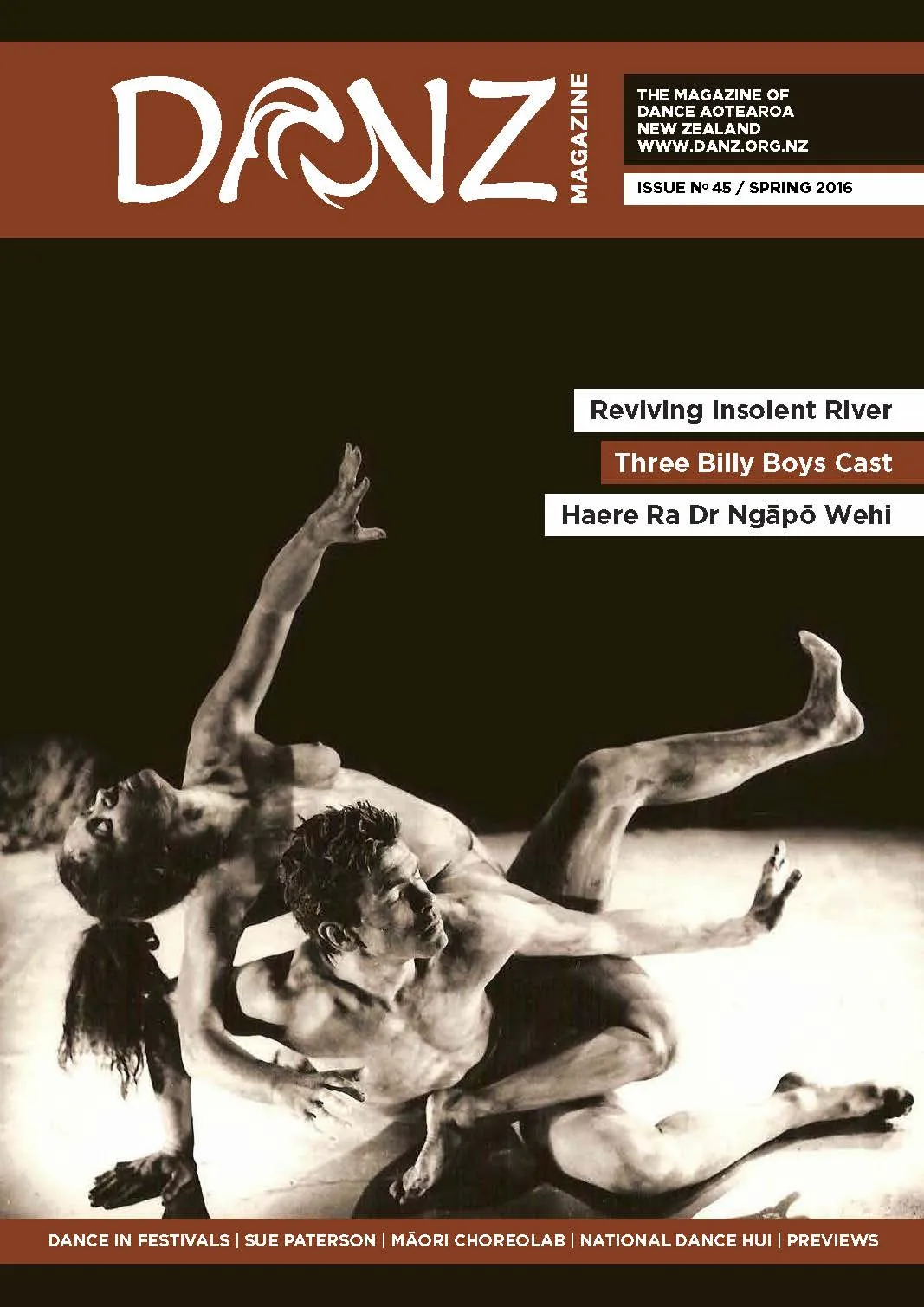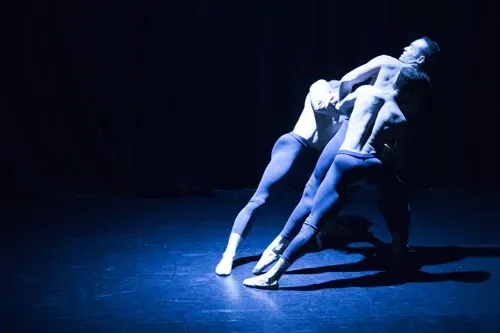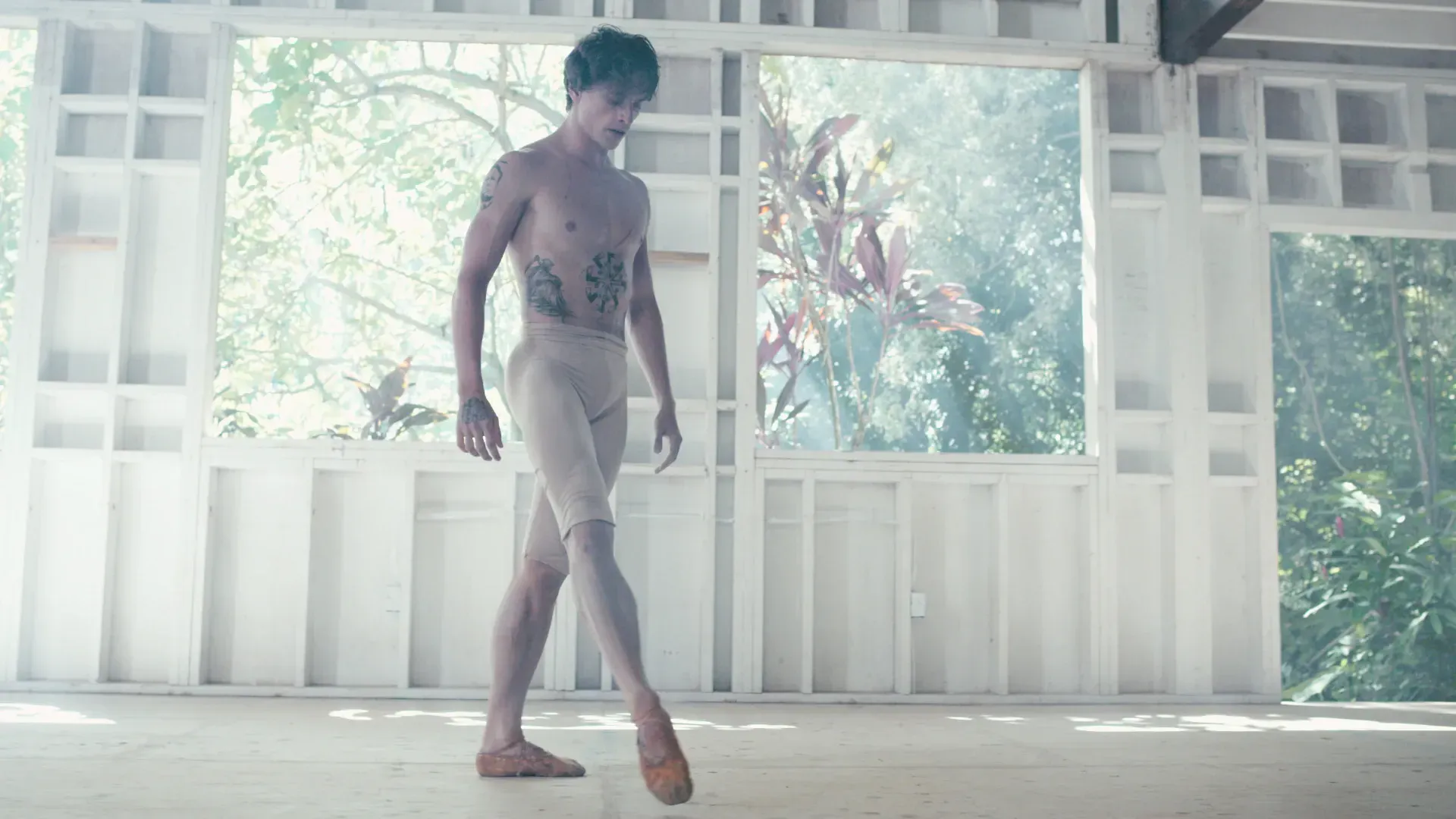DANZ Online Round-Up: Latest DANZ Dance Articles
Written by

DANZ Magazine Issue No. 45
October-December
Featuring:
Insolent River: Testing the Test of Time
Michael Parmenter's seminal contemporary dance work Insolent River first premiered in 1985; over 30 years later, the piece has been revived. Chris Jannides interviews Michael, Lyne Pringle and Maari Gray about their memories of the piece and why the decision to remount it was made.
In Conversation with Sue Paterson
Sue Paterson is a pillar in the festival circuit with the New Zealand Festival and Wellington Jazz Festival under her belt. After eight years as the NZ Festival Executive Director, Sue is stepping down. DANZ Chief Executive Anton Carter talks with Sue.
Programming Dance at Festivals in Aotearoa, New Zealand
Nobody ever said being a Festival Director is an an easy gig and there's certainly more to this story than facts and figures. Dione Joseph embarks on a journey from north to south to ask the question: "What are Festival Directors thinking when it comes to dance?"
DANZ Magazine Spotlight: Melbourne City Ballet
A DANZ members Spotlight on the Melbourne City Ballet, a company with New Zealand ties and whose vision is “to provide everyone in the community with access to quality classical ballet”.
Read the the latest DANZ Magazine, Issue 46, online now!
Featuring Te Matatini, a profile on the Kiwi Julliard student, a conversation with val smith, international residencies + much more...
Latest DANZ Dance Reviews
Pango/Black, Atamira Dance Company
Opera House, Wellington - 10 December
Reviewed by Leah Maclean
Atamira Dance Company's Pango/Black can be interpreted in so many ways. An exploration of the ‘void’ and a commentary on the humanity that has grown out of that void, and its future thereafter. Pango/Black is a primal adventure that one must take a moment to think about.
Sergei Polunin: Dancer, Directed by Steven Cantor
Film Review
Reviewed by Lauren Sanderson
Unlike so many films about ballet, ‘Dancer’ isn’t about the toll such discipline takes on the body. It’s about the toll it takes on a life. Cantor has stunningly told the sad but beautiful story of a young vulnerable ballet star who strived for more. But when you’re the greatest in the world, what else is there left to achieve?
Read our exclusive interview with Sergei Polunin!
Lifeworld (in five parts), Footnote New Zealand Dance
Opera House, Wellington - 19 October
Reviewed by Leah Maclean
The latest and final work of the year by Footnote New Zealand Dance is the brainchild of Claire O’Neil - Lifeworld (in five parts) is exactly how it sounds. The show is built around our relationships with everyday life, objects and phenomena. The Footnote cast of Jeremy Beck, Brydie Colquhoun, Emma Dellabarca, Jared Hemopo, Lana Phillips and new comer Joshua Faletua boast their boundless energy and fluidity in this work, which is equal parts light and dark. Lifeworld is a mixed bag with slapstick humour to balance out the more sinister, plus aspects which one finds themselves able to relate to. Rituals, daily decisions and experiences are intrinsic to this piece, Lifeworld utilises multiple layers in movement, music, lighting, spoken word and film to deliver this story. Though not always totally cohesive, it is an accessible and easy piece with experimental tones, falling more into the category of dance theatre.
Taumata: Four New Works, Bianaca Hyslop, Taane Mete, Sarah Foster-Sproull & Loughlan Prior
Q Theatre, Auckland - 15 October 2016
Reviewed by Francesca Horsley
Four abstract works of Taumata, demonstrated the strength, depth and finesse of contemporary dance in New Zealand.
Bianca Hyslop’s A Murmuration was a delightful opening, with mass movement patterns of starlings when they magically turn and scythe through the air. The dancers; Chrissy Kokiri, Chris Ofanoa, Katie Rudd and Carl Tolentino from The New Zealand Dance Company, showed their artistry with an impressive interpretation of natural movement.
Also drawing on natural forces, Manawa was an arresting solo by Taane Mete that explored the effort required to connect to the life force and triumph over adversity. This was a private, personal work of integrity and honesty.
Sarah Foster-Sproull’s Sisters of the Black Crow was a powerful yet disturbing discourse on female control and possession. Jahra Rager Wasasala, Rose Philpott and Grace Woollett represented sirens, demons, and underworld goddesses. They formed pentangle shapes with their hands, and the choreography drew on images from Kali, the fierce Hindu goddess of feminine power.
The representation of the temptress woman as the author of original sin was the theme of Eve by Royal New Zealand Ballet’s Loughlan Prior. RNZB dancers Laura Jones, William Fitzgerald, Kirby Selchow, Alexandre Ferreira and Leonora Voigtlander gave a spectacular performance of a contemporary world where women threw themselves at men – maybe eliminating the need for Tinder hook-up.
Meremere, Rodney Bell & Movement of the Human
Q Theatre, Auckland - 14 October 2016
Reviewed by Jenny Stevenson
Central to the multi-disciplinary work Meremere is the voice of dancer Rodney Bell as he relates his personal stories through both dance and the spoken word. As a wheelchair dancer, Bell uses his expressive upper body, with particular emphasis on the arms and hands, when creating the movement which is underscored through the freewheeling momentum and spatial patterning of the chair being manipulated in differing directions.
Bell’s performance is moving, honest and disingenuous. He is a genuine kiwi raconteur using self-deprecating humour to smooth out the edges of what is in fact a quite harrowing story. He likens his own sense of loss to the wood shavings that were shed when he began carving a meremere, so that it became his mission to gather them up and return them to their natural surroundings. At the conclusion of the work he throws a handful of shavings onto the floor in a gesture that resonates far beyond the spoken word.
SIVA Niu Sila, Katerina Fatupaito, Jahra Rager, Tupua Tigafua & Nikki Upoko
Q Theatre, Auckland - 13 October 2016
Reviewed by Jenny Stevenson
SIVA Niu Sila presents a snapshot of current practice in Pacific contemporary dance with four works from the recent Pacific Dance Festival. The programme pulls no punches and veers between the polarities of dark and brooding content through to a lighter, less political expression of cultural identity. It features the work of Samoan, Fijian and Cook Island choreographers.
Katerina Fatupaito assembles a strong cast to investigate cannibalism in her work Burnt Skin. Mostly danced by a trio, it includes a stand-out performance by Riki Nofo’akifolau.
Jahra Rager Wasasala’s solo work bloo/d/runk, is a complex ritual which examines “the relationship between the earth and the female form”, through poetic text and a jerking, spasmodic movement vocabulary.
Tupua Tigafua brings a lightness of being to his work for four dancers entitled Plan B, utilising his own unique blend of mime and contemporary dance that never fails to appeal.
Nikki Upoko creates a gentle movement design in her work The Call, which she performs in a duet with Natalie Toevai.
VU, VOU Dance (Fiji)
Q Theatre, Auckland - 8 October 2016
Reviewed by Raewyn Whyte
Choreographed by Vivian Aue, in collaboration with the performers, Vou Dance Company's challenging new work, VU, shows a change in choreographic approach and style for the company. The new work remains true to their mission of bringing Fijian stories, traditions and culture to the world through contemporary dance, but now they are offering critical reflection rather than a straightforward celebration of received knowledge.
VU is intense, ritualistic, and slow moving. Lit mostly by bare lightbulbs, which cast deep shadows, the movement is minimal, cyclic, and pared back to essentials, often extreme and physically violent.
VU focuses on relationships between men and the ancient gods of Fiji's many islands, the VU, who provide both protection and endangerment to individuals of a particular location. It also examines the use of kava in traditional village rituals, and questions what it is to be part of a culture in contemporary society.
Insolent River: A Tango, Michael Parmenter
Q Theatre, Auckland - 5 October 2016
Reviewed by Paul Young
Insolent River was created 31 years ago, exactly halfway through Michael Parmenter's life. Parmenter is 62 years young. In 1983, while dancing with Stephen Petronio in New York, Parmenter became fascinated by and compelled to study with the renowned butoh artist Min Tanaka in Japan. Also, while in New York, Parmenter had witnessed the tango revival show Tango Argentino and was impressed by the dancers’ improvisational partnership which is built around their embrace.
Parmenter imagined the two experiences coalescing, the relational and bodily embrace of the tango situated in the elemental embrace of the mountain, and these seemingly antithetical ideas merge and diverge conceptually and thematically throughout Insolent River: a tango.
Like its predecessors in ’85 and ’88, the 2016 version of Insolent River: a tango is a dance which deals with desire, more specifically perhaps, the desire to find completion through another.
Fluid, beautiful, and alive, Michael Parmenter's Insolent River is unequivocally timeless, crossing and uncrossing Rubicons by way of its own resurrection, the virtuosity of its dancers and its conceptual depth. Could there be a better analogy for the twists and turns of our lives than a river, which no matter how ferocious and singular, slows, and is eventually subsumed by the sea?

